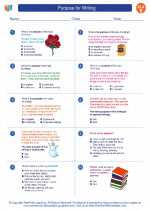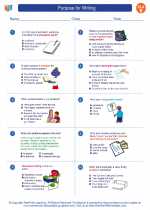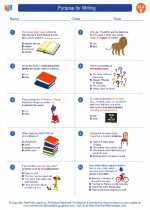Purpose for Writing
Purpose for writing (to explain, describe, narrate, persuade or express feelings).
◂English Language Arts Worksheets and Study Guides Fifth Grade. Purpose for Writing
Worksheet/Answer key Purpose for Writing
Purpose for Writing  Worksheet/Answer key
Worksheet/Answer key Purpose for Writing
Purpose for Writing  Worksheet/Answer key
Worksheet/Answer key Purpose for Writing
Purpose for Writing 

 Worksheet/Answer key
Worksheet/Answer key
 Worksheet/Answer key
Worksheet/Answer key

The resources above cover the following skills:
Students employ a wide range of strategies as they write and use different writing process elements appropriately to communicate with different audiences for a variety of purposes. (NCTE)
Students participate as knowledgeable, reflective, creative, and critical members of a variety of literacy communities. (NCTE)
Students use spoken, written, and visual language to accomplish their own purposes (e.g., for learning, enjoyment, persuasion, and the exchange of information). (NCTE)